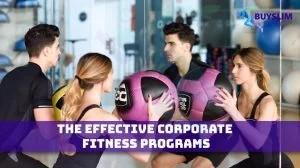In a world filled with sedentary jobs and digital distractions, the importance of staying physically active cannot be emphasized enough. Engaging in regular exercise, especially activities that enhance cardiorespiratory fitness, is a fundamental step towards maintaining a healthy lifestyle.
Understanding Cardiorespiratory Fitness
Cardiorespiratory fitness, often referred to as cardiovascular fitness, is the ability of the heart and lungs to supply oxygen-rich blood to the working muscles during physical activity. It reflects the efficiency of these systems in delivering oxygen and nutrients to the body and removing waste products.

Benefits of Cardiorespiratory Fitness
Boosting Endurance
Engaging in cardio workouts on a consistent basis leads to improved endurance. This means that you can engage in physical activities for longer periods without feeling fatigued. Whether it’s climbing stairs, going for a long hike, or participating in sports, having good endurance significantly enhances your performance.
Enhancing Heart Health
Cardiovascular exercises, such as running, brisk walking, and swimming, are excellent for heart health. These activities help in strengthening the heart muscle, improving blood circulation, and lowering the risk of heart disease.
Managing Weight
Cardiorespiratory workouts are also effective for weight management. Engaging in these exercises burns calories and contributes to creating a calorie deficit, which is essential for weight loss and weight maintenance.
Incorporating Cardio Workouts
Running and Jogging
Running and jogging are classic cardio exercises that require minimal equipment. They can be done outdoors or on a treadmill, making them easily accessible and versatile options for boosting cardio fitness.
Cycling
Cycling, whether on the road or on a stationary bike, is a low-impact cardio exercise that is gentle on the joints while providing an excellent cardiovascular workout.
Swimming
Swimming engages multiple muscle groups and offers a full-body workout. It’s an ideal choice for those looking for a challenging cardio exercise with minimal impact on joints.
Finding the Right Intensity
The intensity of your cardio workouts plays a crucial role in achieving optimal results. The talk test and the rate of perceived exertion (RPE) scale are two methods you can use to gauge and control the intensity of your workouts.
Progression and Challenges
High-Intensity Interval Training (HIIT)
HIIT involves alternating between short bursts of intense exercise and periods of rest or low-intensity activity. This approach not only saves time but also boosts cardiorespiratory fitness effectively.
Overcoming Plateaus
Hitting a fitness plateau is common. To overcome it, consider modifying your routine, trying new activities, or adjusting the intensity and duration of your workouts.
Monitoring Your Fitness Levels
VO2 Max Testing
VO2 max is a measurement of the maximum amount of oxygen your body can utilize during exercise. It’s a valuable indicator of cardiorespiratory fitness and can help tailor your workouts.
Wearable Fitness Trackers
Wearable devices like fitness trackers provide real-time data on your heart rate, calories burned, and more. They can be motivational tools and offer insights into your progress.
Cardiovascular Health and Longevity
Maintaining cardiorespiratory fitness is closely linked to overall cardiovascular health and longevity. Regular cardio exercise helps prevent lifestyle-related diseases and contributes to a longer, healthier life.
Mental Well-being and Cardiorespiratory Fitness
Engaging in cardio workouts has positive effects on mental well-being. Exercise releases endorphins, which are natural mood elevators, helping reduce stress, anxiety, and depression.
Nutrition’s Role in Supporting Cardio Fitness
A balanced diet plays a vital role in supporting your cardiorespiratory fitness goals. Nutrient-rich foods provide the energy needed for workouts and aid in muscle recovery.
Overcoming Barriers to Exercise
Time Management
Lack of time is a common barrier to exercise. Planning and prioritizing your workouts can help overcome this challenge.
Motivation
Staying motivated can be tough. Setting goals, finding a workout buddy, or rewarding yourself can help maintain your enthusiasm for staying active.
Injury Prevention
Injuries can hinder your fitness journey. Incorporating warm-up exercises, using proper form, and listening to your body can prevent workout-related injuries.
Inspiring Others and Building a Community
Leading an active lifestyle can inspire those around you to do the same. Sharing your journey and accomplishments can create a supportive community focused on well-being.
Active Lifestyle: More Than Just Exercise
An active lifestyle goes beyond scheduled workouts. Incorporating movement into daily activities, such as walking instead of driving or taking the stairs, contributes to overall fitness.
Embracing Variety in Workouts
Varying your cardio workouts not only prevents boredom but also challenges different muscle groups and energy systems, leading to better overall fitness.
Conclusion
Cardiorespiratory fitness is a cornerstone of an active and healthy lifestyle. By engaging in regular cardio exercises, you can enjoy improved endurance, heart health, weight management, and mental well-being. Remember that consistency is key, and finding activities you enjoy makes staying active a fulfilling journey.




